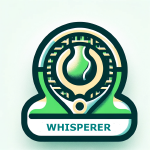Learning from the Lows: Alcaraz on Match Dips
Match Troughs: What Alcaraz Teaches Us
Tennis isn’t just a test of strokes and stamina—it’s a rollercoaster of momentum. Even the world’s best aren’t immune.
Carlos Alcaraz, a Grand Slam champion and current world No. 3, recently reflected on his early exit at the Miami Open after losing to David Goffin.
“A poor level from me… Not feeling great or confident physically, it’s really tough to get back.” — Carlos Alcaraz
This quote speaks volumes about the match trough—a mental and physical dip during a match where your energy and sharpness drop, often while your opponent hits their peak.
Alcaraz has faced this before: Jesper de Jong at Roland Garros, Ugo Humbert in Paris, Jack Draper at Indian Wells—each opponent capitalized on a momentary lapse to flip the script.
But here’s the truth: every competitive player hits these troughs. What separates the great from the greatest is how they manage them.
What Causes the Match Trough?
1. Physical Fatigue
A small dip in stamina can mean slower footwork and reduced court coverage—just enough for your opponent to seize control.
2. Mental Disengagement
As Alcaraz notes, lacking physical confidence leads to hesitation. You start reacting instead of dictating.
3. Opponent’s Peak
Top players raise the level of their opponents. Even a brief lapse in your level can invite a surge you’re unprepared for.
Strategies to Climb Out of the Trough
1. Reset with Intention
Use between-point rituals to mentally reboot. A powerful method is the tennis ball squeeze—dynamically squeezing your non-dominant hand for 10–15 seconds. This technique has been shown to reduce stress and sharpen mental focus.
2. Breathe Like a Champion
Deep, slow breathing between points reduces heart rate and mental noise. This is a cornerstone of performance psychology.
3. Lock into Personal Rhythm
Get back to your rhythm—bouncing the ball the same number of times or adjusting your strings. Rituals create control amidst chaos.
4. Expect the Surge
Your opponent will make a push. Anticipating this makes it easier to absorb, recover, and counter when they dip.
5. Habit-Based Recovery
Using James Clear’s Atomic Habits framework, design your recovery routine:
-
Make it Obvious: Place a visual cue on your towel or racket.
-
Make it Attractive: Tie it to a positive mindset or momentum reset.
-
Make it Easy: Keep the ritual under two minutes.
-
Make it Satisfying: Reinforce the small win of regaining composure.
Closing Thought
Tennis is controlled chaos under pressure. Alcaraz’s recent struggles are a reminder that dips are inevitable—even for champions.
But staying in the trough? That’s optional.




